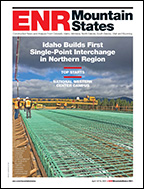A lot of work goes into these, and having negotiated with freight rails in my past…usually a deal with a freight railroad company takes two or three years for one deal. So we’ve been trying to do dozens of deals across the country with many partners. And I think what this represented was just another step where we’ve been working for months and months and months to do good deals and they just started to move.
Now, I will tell you that our boss, [FRA Administrator] Joe Szabo, likes to say that we wanted to get as much as we could [obligated] a year ahead of the [Sept. 30, 2012] obligation date that was in the recovery act, because we wanted to get the jobs out sooner.
But we always did balance between jobs out as soon as possible and getting good agreements that will protect the long-term federal investment in rail...And we’re very pleased with the agreements we’ve got. They protect performance of the system for 20 years in almost every case. And that’s an important underpinning of the negotiations….
I’m wondering whether there was also, at least in part, a desire to protect this funding from possible rescissions or cutbacks in Congress, given what’s been happening on high-speed rail funding in recent weeks and months?
Well, having been here since about two months after [the American Recovery and Reinvestment Act] was passed, I will tell you that this activity has been unending and just the staff has worked from literally day one—from releasing the strategic plan on--at a non-stop pace.
So it wasn’t in response to anything other than our desire to get these good projects obligated, get good agreements in place and the jobs started as soon as possible.
With these obligation announcements, what will this mean for engineering and construction firms?
Well I happened to be with a large number of [those firms] on [Oct. 2]...and they are all very excited. Several of them are already engaged in many of the projects around the country….I had to remind them that although we’re awarding the money and have to agree on all the contractual arrangements, the procurements are handled at the state level and so I just kind of headed them towards our Web site….We have 72 of the 77 projects that were part of the recovery act that are now out there in some phase of development….
Actually, the interesting thing is a lot of firms have contracts, but they’ve been waiting because they couldn’t get a notice to proceed until we had all these agreements and the final grants in place…. So there’s a lot [on which] we expect to have actual construction work under way. In some places, it’ll be more of the initial engineering and PE work, and then in places like California, we are deep, deep into the EIS process, the NEPA process….
It’s like any other transportation program....This is really about a pipeline, and the more complex your project is, it’s going to take a little longer. The smaller projects that were relatively ready to go and had done good planning in advance of this, those are the ones we’re seeing moving. And now we’re starting to see that next layer. It’s kind of like a trickle that becomes a stream and then becomes a river as it flows forward.



Post a comment to this article
Report Abusive Comment